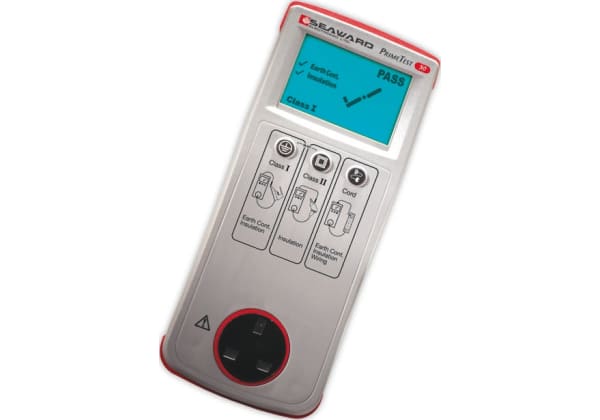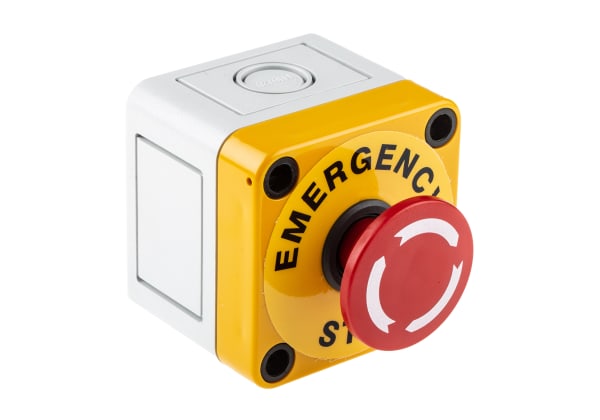- Published 30 Jan 2023
- Last Modified 29 Aug 2023
- 12 min
A Complete Guide to ESD Protection
Our expert guide covers ESD protection methods, ESD control products, handling procedures, and FAQs.

ESD protection is a vital consideration when working with sensitive electronic components and assemblies. ESD stands for electrostatic discharge and refers to sudden releases of built-up static electricity. This common phenomenon can damage electronic parts if not guarded against. Electrostatic discharge protection involves a broad range of products and techniques.
There are various key strands involved in taking a comprehensive approach to full ESD protection - simply adding a couple of anti-static products into your normal workflow is not enough. Proper ESD control is about ensuring the right combination of tools, clothing, working environments, staff training, and user behaviour is deployed effectively.
This introductory guide is intended to cover many of these ESD control products and techniques. We aim to help you understand what ESD protection is and what methods you can use to minimise the risk of electrostatic damage to sensitive components. We will also answer several common questions around the wider issue of ESD-aware electronics handling.
By the end of this guide, you should have a clear view of exactly what ESD protection means in practice. You will also be aware of various methods and products used for effective electrostatic discharge protection, as well as the types of training required to improve ESD control handling procedures.
What is ESD Protection?

ESD protection is the process of helping to guard sensitive electronic devices and components against the potentially damaging effects of electrostatic discharge. Wherever you are in direct physical contact with electronics, circuitry and other high-tech assemblies, you will need to be aware of the potential impact of ESD events.
In short, ESD is effectively like a mini lightning strike on an electrical device. Depending on the amount of energy released and the sensitivity of the assembly involved, some ESD events can be entirely harmless. However, they can also cause a wide range of problems: reliability and performance issues, minor latent damage to individual components, melting/burnout, or even catastrophic failure of entire systems.
There are many facets to covering all the ESD protection basics. These include:
- ESD control products
- Environmental factors
- ESD-safe clothing and workwear
- ESD protection training, and approved component handling techniques
What Causes Electrostatic Discharge?
ESD is caused by two surfaces, items or bodies that are at different levels of electrostatic charge coming into close enough contact with each other. When one is positively charged and the other negative - typically because of gradual charge build-up through friction - the protons and electrons that carry these charges will attempt to balance each other out by rapidly exchanging at the point of contact.
On a small scale, this is exactly what happens when you get a little shock from touching a doorknob or handrail, for example. On a much larger scale, it is also what is going on when you see thunder and lightning. Not only can ESD interfere with or irreparably damage sensitive electrical components even at fairly low charges, but it can also cause sparking that will ignite atmospheric gases at high enough concentrations.
Anti-Static Symbols
Electronic components, devices and other products that are potentially vulnerable to the effects of ESD will usually be labelled as such. Rather than there being just one anti-static symbol to look out for, there are three main ESD-related symbols you ought to recognise when handling these types of products and circuits.
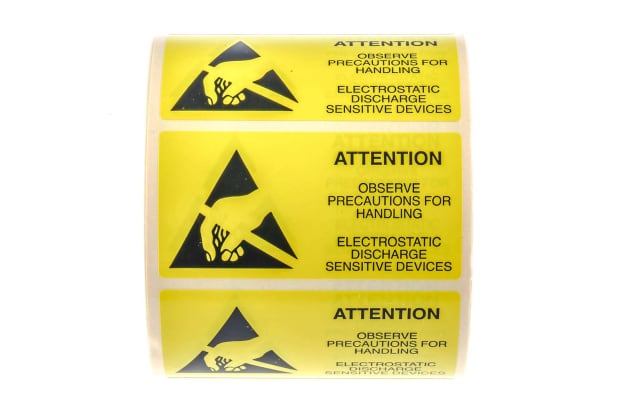
ESD Susceptibility Symbol
This is perhaps the most common one you will encounter on product packaging or in the workplace. Often highlighted in bright yellow or orange, it depicts a hand reaching into a triangle with a line drawn through it. This indicates that a device or assembly is likely to suffer damage from ESD events and advises caution along with proper ESD control measures when handling the item.

ESD Protective Symbol
This symbol looks like the susceptibility mark at first glance, but the differences are important. In this case, the hand reaching into the triangle has no slash through it, and instead, there is a bubble or arc depicted around and above the image. This indicates that a product is ESD Protective, meaning it offers at least one electrostatic discharge control feature designed to lower the risk of an ESD event.

ESD Common Point Ground Symbol
This symbol indicates the location of a common point ground - in other words, a device that has already been properly grounded, and which can be used to discharge any buildup of electrostatic harmlessly. Individuals handling an ESD-susceptible component should be able to connect themselves safely to this grounding point before making contact, and thus minimise the risk of an ESD event.
ESD Protection Methods

ESD protection methods involve a combination of control products, electrostatic discharge prevention, and approved techniques like proper ESD grounding methods.
This diagram shows how the basic structure of an ESD-safe workplace should look.
- A – antistatic mat
- B – ground cable
- C – Grounding plug
- D – ESD loop
- E – ESD wristband
What is ESD-Safe?
ESD safe means different things to different people in varying contexts, largely because ESD control is far more critical in some scenarios and environments than in others. However, broadly speaking, ESD safety means that all practical measures have been taken to keep the risk of an electrostatic discharge event to a minimum.
ESD Control Products
There is a vast array of ESD control products and ESD protection equipment sold online in the UK today. Among the most widely used and popular of these are some relatively basic items, such as anti-static bags and ESD wristbands.
However, depending on the criticality of minimising the risk of static build-up and discharge, you can build a much larger ESD control system involving dozens of related products.
Below, you will find some of the most common ESD control products.

ESD Grounding Clamps
An ESD grounding clamp is used to connect equipment susceptible to a discharge event directly to the ground. Once suitably grounded in this way, the risk of ESD damage is greatly reduced.
They usually consist of a metal clip or static clamp attached to a length of cord, often tightly coiled and designed to stretch in use. At the other end is a grounding device, designed to be connected directly to the ground. The clamp attaches to the electrical component being worked on. This connection to the ground disperses any latent charge safely, without the risk of sudden arcing or shorting causing an ESD event.
Grounding clamps are usually priced according to the size of the clamp jaw opening, and the length or gauge of the attached cord.

Particle Removal Rollers
Particle removal rollers, also known as sticky rollers or ESD contact roller cleaners, are widely used in ESD control and cleanroom environments.
They are ideal for cleaning components like PCBs and other electrical circuitry, effectively removing dust and fibres without subjecting the components to brushing or wiping motions, which can quickly build up a significant static charge.

Anti-Static Wrist Straps
Anti-static wrist straps or bands (often called ESD wrist straps) work in much the same way as a static grounding clamp, except they connect the user to ground rather than the electrical device being worked on.
The effect is broadly similar - it provides a path of least resistance for any latent static charge that has built up through the movements of the wearer. This allows the static electricity to safely discharge to ground and minimises the risk of it arcing across from the operator to the component they are touching.
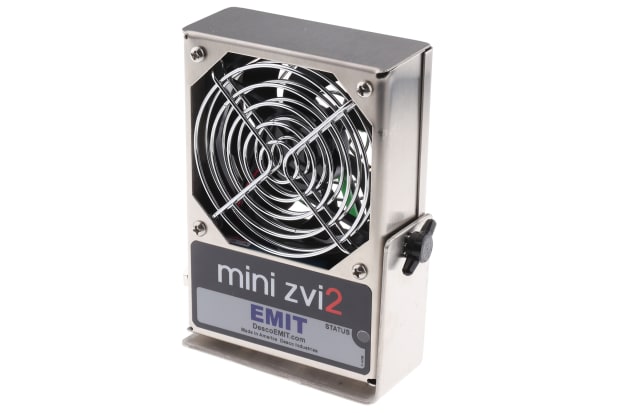
Ionisers
Ionisers are a type of filtration and recirculation device commonly used in anti-static clean rooms. They help to reduce the chances of a damaging ESD event by generating positive and negative ions around sensitive electrical equipment, while also removing excess airborne particulates and contaminants. Particles in the air and on equipment surfaces can cause friction, leading to increased static levels.
Ionisers work on the principle that these particles will be attracted to ions of the opposite polarity when in the presence of electricity, which helps to neutralise them before the build-up of static can trigger an ESD event. You can buy both whole-room ionisers and smaller precision ionisers for focused targeting of specific components.

Ionisation Accessories
Ionisation accessories are used alongside ionisers and include handy add-ons such as replacement filter cartridges, power adapters, mounting brackets and feedback sensors.

Anti-Static Bags
Anti-static bags are used for storing ESD-susceptible electronics. When you buy components like motherboards and graphics cards - or any device containing a PCB – they will often arrive in an anti-static bag.
There are two types of anti-static bags - metallised or PET. Metallised versions are usually silver and combine a conductive metallic framework with a dielectric plastic layer. This helps dissipate ESD around the outer surface of the bag, similar to how a basic Faraday Cage works in principle.
PET versions are usually pink and prevent the build-up of their own static electricity via a dissipative coating. However, they lack the conductivity of metallic anti-static bags and cannot protect their contents from external ESD events.

ESD Shoes
ESD-safe shoes and anti-static shoes are terms that might often be used interchangeably, but there is technically a slight difference in definition. Both help to minimise the build-up of static electricity caused by the wearer moving around, by quickly conducting any latent charge to the ground.
However, fully ESD safe footwear does so at even lower resistances than more basic antistatic shoes, and as such, meets more stringent criteria for ESD control and cleanroom applications. Either type may be available or compatible with additional accessories like ESD shoe straps for additional grounding.

ESD Grounding Kits
An ESD grounding kit can feature various combinations of items for different intended applications and usage environments. Some are designed and packaged specifically as ESD-safe field kits for a convenient all-in-one solution when working remotely.
Depending on the type of kit you buy, products bundled in might include wrist grounding straps and bands, grounding toe and heel straps, disposable grounders, earth-bonding grounding plugs and adapters, and ESD grounding cords and clamps.

ESD Mat Kits
ESD safety mats are also referred to as static control grounding mats. An ESD protection mat kit typically consists of one or more anti-static floor mats, often made from ESD-safe rubber or similar materials.
They provide a clear demarcation of an ESD Protected Area (EPA), within which all sensitive devices, surfaces and bodies will be maintained at the same electrical potential, lowering the risk of discharge events. Mats can be used both on the floor and on work surfaces where appropriate.
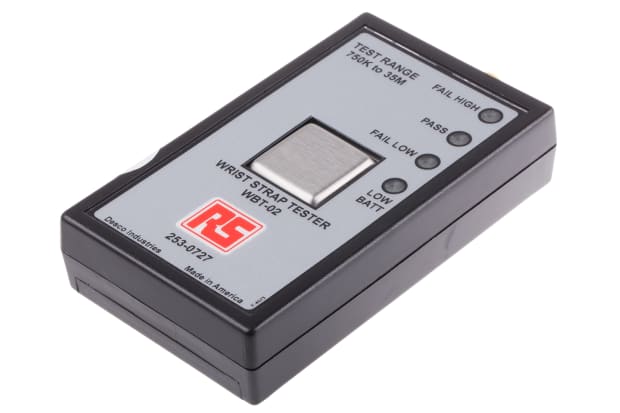
ESD Test Equipment
ESD test meters measure the level of electrostatic discharge for a given surface, individual, or item of equipment. They can be designed either for desktop or wrist-worn use and may be mains or battery operated.
They work by monitoring surface resistances through various types of sensor or detection modules, allowing the operator to ensure that potential for an ESD event remains within acceptably safe levels. ESD Continuous Monitors, or Constant Monitors, are a related type of device used for ensuring the integrity of an entire ground loop at all times.

ESD Gloves
Anti-static gloves for electronics, generally referred to as ESD safe gloves, are required to be worn in the vast majority of cleanroom and electrostatic control situations. They make it much safer to handle items and components like PCBs, motherboards and backplanes without risking a sudden static discharge to sensitive components.
They are typically made from materials such as static-dissipative polyester and will help to improve grip as well as protect electronics and devices from the natural oils in our skin. A less obtrusive variant than a whole glove is a latex finger cot, which provides similar protection but leaves the palm and back of the hand uncovered for improved all-around hand mobility and dexterity.

ESD Safe Tools
ESD safe tools cover a broad range of handheld devices and equipment, designed for performing multiple different functions just like regular hand tools. However, to provide enhanced ESD control, they will often be manufactured with features such as antistatic grips or integrated grounding cords.
ESD safe probes are an especially common requirement for working with electronics and circuitry.

ESD Packaging Boxes
ESD-safe bins and boxes are widely found in these sorts of high-tech workplaces too. ESD packaging boxes and anti-static plastic containers may be used for either delivery or storage purposes and are commonly made from polypropylene. This is a conductive plastic material that provides constant protection against static build-up and discharge.
Depending on your needs, you may prefer to choose a model that can be stacked or mounted directly into a wall rack. Different brands may offer additional handy features such as carrying handles, interlocking lids, compartment dividers or index cards for easy labelling.
ESD Precautions and Proper Handling Procedures
Different industries and products have varying requirements and standards for full ESD compliance, ESD training and certification. When it comes to defining best practices in terms of ESD precautions and proper handling procedures, the extent to which you will need to adopt tailored approaches will depend on the prevailing demands and standards of your industry or workplace.
